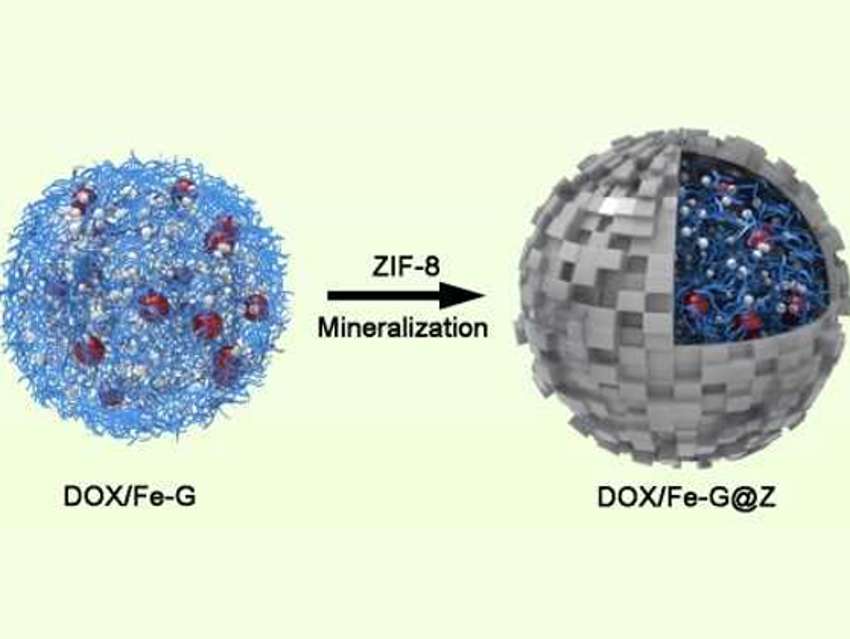Delivery of a drug and a gene in a single nanoparticle is of great interest for cancer therapy. Such systems could achieve a synergistic effect by combining chemotherapy and gene therapy. However, due to the drastically different physicochemical properties, it is difficult to encapsulate chemotherapeutics and nucleic acid therapeutics in a single nanoparticle.
Lele Li, National Center for Nanoscience and Technology, China, and colleagues have developed a simple approach to create nanoplatforms for the combined delivery of chemotherapeutic drugs and nucleic acid therapeutics. The team’s system was synthesized through one-step coordination-driven self-assembly of two drugs together with iron(II) ions: the nucleic acid therapeutic G3139, which targets a protein that controls cell death, and the chemotherapy drug doxorubicin hydrochloride (DOX) (process pictured below).
The self-assembly was followed by mineralization of the assembly’s surface with the metal‐organic framework (MOF) ZIF-8. For this, 2-methyl imidazole and zinc nitrate, the MOF’s components, were added to a dispersion of the two-drug assembly and the reaction mixture was left standing for 24 hours.
The resulting core-shell nanoparticles have a well-defined spherical shape and a high drug-loading capacity. The ratio of the two therapeutic agents in the nanoparticles can be precisely adjusted. The system can efficiently accumulate in tumors and inhibit their growth. According to the researchers, this work provides a useful approach for the delivery of clinically used drug-gene combinations.

- A Biomimetic Coordination Nanoplatform for Controlled Encapsulation and Delivery of Drug-Gene Combinations,
Bei Liu, Feng Hu, Jingfang Zhang, Congli Wang, Lele Li,
Angew. Chem. Int. Ed. 2019.
https://doi.org/10.1002/anie.201903417




